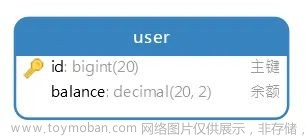为什么要自己写一套判空的呢?
目前java中判空的手段有3种
- if
- Optional
- 三元
- 第三方封装工具(基于上3种手段封装的工具)
假设我有一个对象: a-》b-》c 这样一个嵌套关系, 现在我想取出c中的数据那么正常代码如下:
if(a!=null &&a.getB()!=null&&a.getB().getC()!=null){
}else{
}
以上代码有3个问题
- 一旦中间有一个是空不能有效的知道是谁, 排查的时候需要写大量的日志
- 如果我想在其中一个不为空的时候做些处理然后在继续,那么上面代码就无法满足了,就需要更加复杂的条件拆分了。
- 美观问题,一旦大量的if出现在代码中将会导致代码非常臃肿难以阅读
高级的东西往往是朴实的, 啥也不说了直接上代码
package com.huanmin.test.utils_common.base;
import com.huanmin.test.entity.RoleEntity;
import com.huanmin.test.entity.UserEntity;
import com.utils.common.base.Null;
import org.junit.Test;
public class ObjNullTest {
@Test
public void test1_ok() {
UserEntity userEntity = new UserEntity();
userEntity.setId(1);
userEntity.setName("huanmin");
RoleEntity roleEntity = new RoleEntity();
roleEntity.setRoleName("1234");
userEntity.setRoleData(roleEntity);
boolean b = Null.of(userEntity).of(UserEntity::getRoleData).of(RoleEntity::getRoleName).is();
System.out.println(b);
String s = Null.of(userEntity).of(UserEntity::getRoleData).of(RoleEntity::getRoleName).get();
System.out.println(s);
Null.of(userEntity).of(UserEntity::getRoleData).of(RoleEntity::getRoleName).is( System.out::println);
Null.of(userEntity).of(UserEntity::getRoleData).of(RoleEntity::getRoleName).isOr(
System.out::println,
()-> System.out.println("isOr")
);
String s2 = Null.of(userEntity).of(UserEntity::getRoleData).of(RoleEntity::getRoleName).orThrow(() -> new RuntimeException("orThrow"));
System.out.println(s2);
String s1 = Null.of(userEntity).of(UserEntity::getRoleData).of(RoleEntity::getRoleName).orElse("orElse");
System.out.println(s1);
String empty = Null.of(userEntity).of(UserEntity::getRoleData).of(RoleEntity::getRoleName).isEmpty();
System.out.println(empty);
Integer convert = Null.of(userEntity).of(UserEntity::getRoleData).of(RoleEntity::getRoleName).convert(Integer::parseInt);
System.out.println(convert);
Null.of(userEntity).of(UserEntity::getRoleData).of(RoleEntity::getRoleName).stream().forEach(System.out::println);
}
//no判断主要用来进行强制中断程序继续执行, 因为在有些场景,下文数据会对上文的数据有着强制的依赖关系,所以需要强制中断,保证数据的完整性
@Test
public void test1_error() {
UserEntity userEntity = new UserEntity();
userEntity.setId(1);
userEntity.setName("huanmin");
RoleEntity roleEntity = new RoleEntity();
userEntity.setRoleData(roleEntity);
boolean b = Null.no(userEntity).of(UserEntity::getRoleData).of(RoleEntity::getRoleName).is();
Null.no(userEntity).no(UserEntity::getRoleData).of(RoleEntity::getRoleName).is( System.out::println);
Null.no(userEntity).no(UserEntity::getRoleData).no(RoleEntity::getRoleName).isOr(
System.out::println,
()-> System.out.println("isOr")
);
String s = Null.no(userEntity).no(UserEntity::getRoleData).no(RoleEntity::getRoleName).get();
System.out.println(s);
}
}
测试结果:
如果链路过程出现了空的情况,在特定的方法中会将链路跟随者报错打印出来

-> 表示正常? 表示这个是空的
以上是我自己研发出来的,只展示了一小部分,还有,中断处理继续判断,集合空处理等,直接就原地起飞, 上面案例给你们一个灵感自行写代码把, 下一个猝死的就是你了。文章来源:https://www.toymoban.com/news/detail-809698.html
(上代码放在目前市面上的各种语言中都是王炸级别的,都没有这样能做到的,哦对了js6+ 有个?语法可以满足一部分,但是局限太大了)文章来源地址https://www.toymoban.com/news/detail-809698.html
到了这里,关于Java-无敌空处理,保证你没见过(独此一家,比Optional好用100倍)的文章就介绍完了。如果您还想了解更多内容,请在右上角搜索TOY模板网以前的文章或继续浏览下面的相关文章,希望大家以后多多支持TOY模板网!









